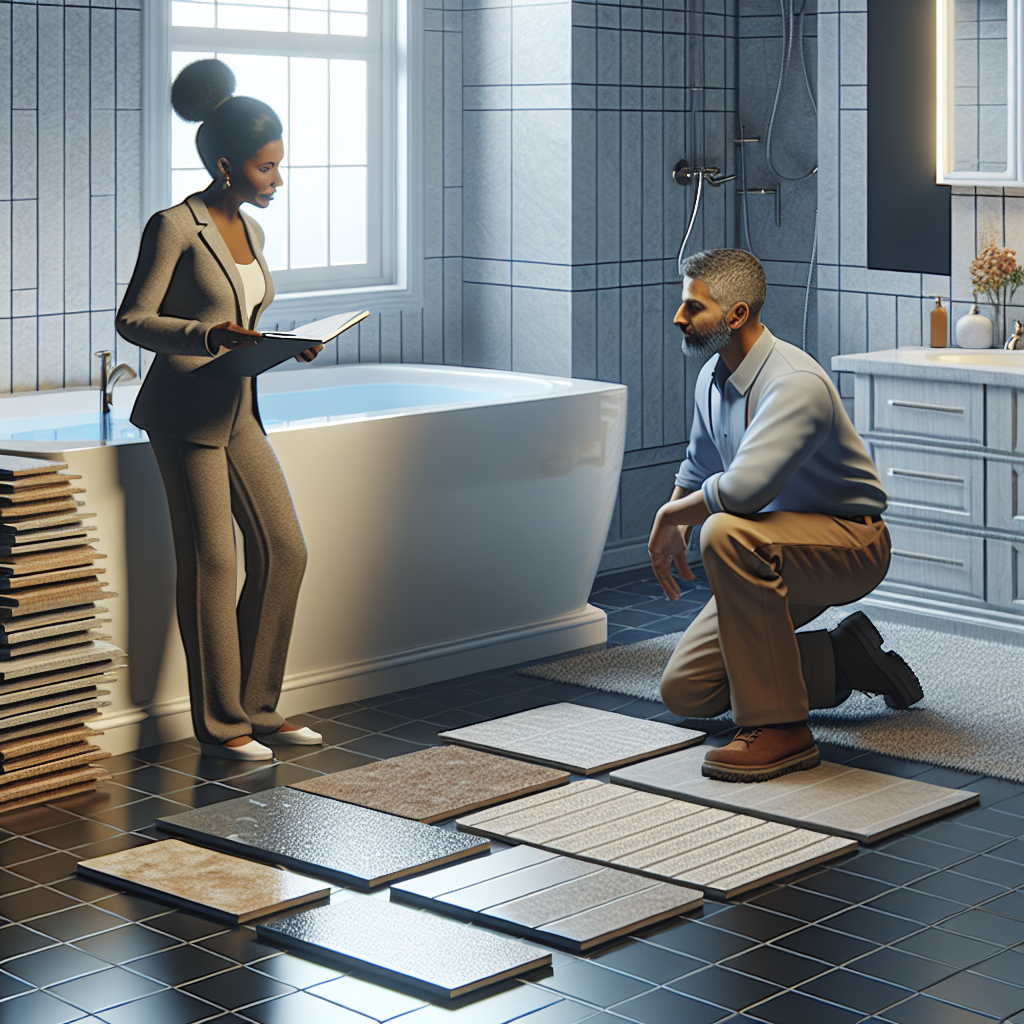When it comes to designing or renovating spaces that frequently encounter water, such as kitchens, bathrooms, or commercial areas, safety is paramount. One critical aspect of ensuring safety is the choice of flooring. Non-slip flooring isn’t just a trend; it’s a vital component in preventing accidents. In this article, we’ll explore the importance of non-slip flooring, the best materials, and tips for making the right choice for your space.
Why Non-Slip Flooring is Essential
Wet areas pose a unique set of challenges. Whether it’s splashes from a sink, a spill on the floor, or moisture from bathroom fixtures, wetness can turn a safe space into a hazard. Slips and falls are among the leading causes of injury in homes and commercial spaces alike, making the selection of appropriate flooring an essential task.
Statistics That Matter
According to the National Safety Council, slip and fall accidents account for numerous emergency room visits annually. By choosing non-slip flooring, you can significantly reduce the risk of these accidents, providing not only safety but also peace of mind for you and your loved ones or customers.
Understanding the Different Types of Non-Slip Flooring
Selecting the right flooring goes beyond aesthetics. Let’s delve into some of the best materials that offer excellent slip resistance.
1. Vinyl Flooring
Vinyl flooring is increasingly popular in wet areas due to its durability and low maintenance. It’s available in a variety of designs, colors, and textures. Many vinyl options come with a textured surface that enhances slip resistance, making them an ideal choice for bathrooms and kitchens.
2. Ceramic and Porcelain Tiles
Ceramic and porcelain tiles are timeless choices for wet areas. They are both water-resistant and easy to clean, making them suitable for high-traffic environments. Look for tiles with a PEI (Porcelain Enamel Institute) rating of 4 or 5, as they tend to have a more textured surface that improves grip.
3. Rubber Flooring
Rubber flooring has gained popularity, especially in commercial settings like gyms and restaurants. It’s naturally slip-resistant, offers sound insulation, and is easy to maintain. Plus, it comes in various colors and designs to match your decor.
4. Stone Flooring
Natural stone flooring, such as slate or granite, can be beautiful and durable. While smooth stone can be slippery when wet, there are finishes available that increase traction. It’s crucial to consult with your flooring professional to choose the right type.
Factors to Consider When Choosing Non-Slip Flooring
Choosing the right non-slip flooring involves more than simply selecting a material. Here are some essential factors to keep in mind:
1. Texture
The texture of the flooring surface plays a significant role in slip resistance. Look for materials that have a rough or matte finish, which can provide better grip compared to glossy options.
2. Water Absorption Rate
Consider the water absorption rate of the flooring material. Materials with lower absorption rates do better in high-moisture environments, reducing the likelihood of developing mold and mildew.
3. Maintenance
Think about how much time you can dedicate to maintaining your flooring. Some materials require more upkeep than others. For busy households or commercial spaces, low-maintenance options are often preferable.
4. Style and Aesthetic
While safety is the priority, it doesn’t mean you have to sacrifice style. Modern advancements have allowed for a vast array of designs across all types of non-slip flooring. Choose a pattern and color that suits your style and complements the rest of your space.
Installation and Safety Guidelines
For effective safety, proper installation is crucial. Here are some tips to ensure your flooring performs its best:
- Hire a Professional: While some people may attempt DIY installations, hiring a professional ensures that the flooring is laid down correctly and meets safety standards.
- Regular Maintenance: Keep the flooring clean and free of debris to maximize its slip-resistant properties. Regular maintenance can prevent the accumulation of slick substances like soap or spills.
- Use Rugs Judiciously: If you opt for area rugs, make sure they are secured with non-slip backing to prevent them from becoming tripping hazards.
Conclusion: Prioritize Safety with Non-Slip Flooring
When choosing non-slip flooring for wet areas, consider your unique environment, aesthetic preferences, and maintenance capabilities. The right flooring not only enhances safety but also elevates the overall style of your space. By prioritizing slip resistance, you are investing in a safe and pleasant environment for everyone who walks through your doors.
As you embark on your flooring journey, remember that the best choice is a combination of style, safety, and functionality. Choose wisely, and enjoy the peace of mind that comes from creating a slip-resistant haven in your home or business.


